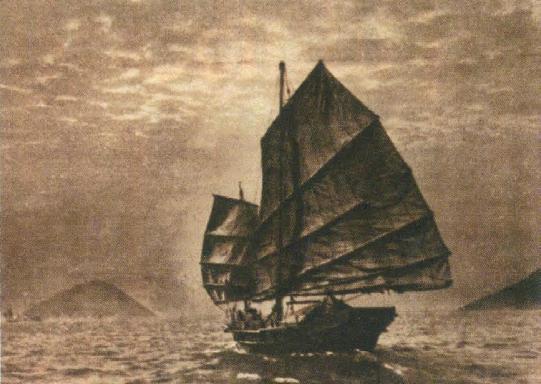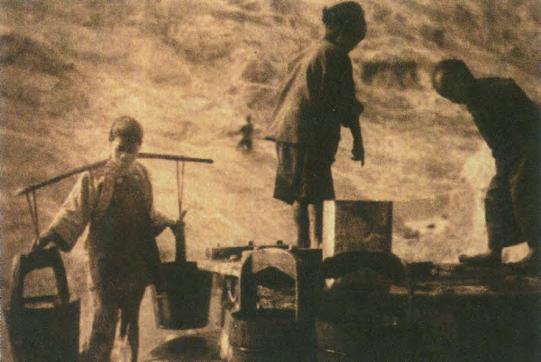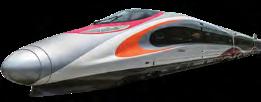
4 minute read
HISTORY MATTERS 香江史料
LAST CENTURY THROUGH THE LENS
鏡頭下的舊世界
Advertisement
One of America's first camera-toting tourists captured some unexpected images of Hong Kong, says Arthur Hacker 一個早期美國遊客,以他的相機捕捉了香港一些出人意表的影像。撰文:亞瑟 . 克赫
1
In 1898 Great Britain leased Hong Kong’s New Territories for 99 years from Imperial China. Included in the lease were over 300 islands, including sparsely populated Lantau, which is actually larger than Hong Kong Island itself.
Three years later an American tourist, Walter J Clutterbuck, arrived in Hong Kong aboard SS Malacca and took some magnificent photographs. At the turn of the century, the average visitor certainly did not own a camera. Rather, most tourists looking to keep a record of their travels would buy pictures from local professional photographic studios such as Afong Lai or Mee Cheung, or purchase one of the recently introduced picture postcards.
A few years ago, while browsing in an emporium of antiquarian books, I came across and bought Clutterbuck's personal photographic album of his journey to Hong Kong, via Malta, Suez and Singapore, aboard SS Malacca. The ship was carrying British troops of the Royal Welsh Fusiliers and their families. Clutterbuck's delightfully informal pictures of the British soldiers and their children, lounging around the deck, are markedly different from the traditional stiff, posed portraiture that was popular at the time.
During his trip to Malta, Clutterbuck didn't bother photographing the massive and magnificent fortifications of Valetta, but took a series of shots of the poor street children in the Citta Vecchia. Clutterbuck somehow managed to capture the character of the people in the way that Bert Hardy and Bill Brandt notably did half a century later in Picture Post and Lilliput, during the golden age of black-and-white photography. ln Hong Kong, he seems to have spent most of his time away from the city of Victoria, photographing the colony’s countryside and backstreets. His first photo session was in rural Kowloon where he displayed a morbid interest in Indian cattle. He also visited Stonecutter's Island where the racing taipans of the Jockey Club put their old nags out to grass when the glory of their racing days was over. These Chinese ponies were brought down from the wild
英國 在 1898 年向中國租借了香港的 新界,為期99年。包括在租約之內的, 有 300多個小島和一個稱為大嶼山的大島,它的 面積比香港島本身還要大。 三年之後,一個名為 WaIter J. CIutterbuck 的遊客乘坐 SS MaIacca 號來到香港,拍了一 些優秀的照片。在上個世紀初,一般遊客並沒有 照相機。明信片在那時剛剛面世,大多數遊客若 想為旅遊留下紀念,會在本地的職業影樓,例如 Afong Lai 或 Mee Cheung 那裡買幾張照片。 數年前,我在一家古董書店買了 CIutterbuck 由馬爾他,蘇彝氏和新加坡去 香港的旅程中所拍攝得來的私人相片簿。那艘 遊輪載着英國皇家威爾斯步槍軍隊及家眷。 CIutterbuck 拍攝在甲板上倚坐着的英國士兵及 他們的孩子,輕鬆而愉快,跟當時流行的傳統 硬梆梆的肖像相有很大的差別。 在他前往馬爾他島的途中, CIutterbuck 並沒有拍攝 VaIetta 雄偉的城堡,他反而 去了 Citta Vecchia 拍攝那裡的貧窮街童。 CIutterbuck 捕捉人物的性格,有點像 Bert Hardy 和 Bill Brandt 在半個世紀之後,正值黑白 照片的黃金時期所刊登於 Picture Post 和 Lilliput 之中的作品一樣。
steppes of Mongolia. Any English 'racing man' would have been intrigued by the sturdy little creatures. Surprisingly, when Clutterbuck visited Happy Valley it was neither the races nor the horses that he photographed, but the Chinese food stalls dotted around racetrack.
He visited Lantau Island at least twice. On one trip he trekked to the then-remote fishing village of Tai O on the island’s western fringes. His two pictures of sampans in the tiny harbour are probably the first pictures of this isolated village ever taken and are magnificent photographs by any standard – the lighting is superb.
His images of Tung Chung Fort are excellent technically but disappoint from a historical perspective. He seems to have been drawn to the fantastic shapes of ancient steps and the interesting heaps of stone rubble that were left lying around this absolutely useless fortification.
Occasionally, Clutterbuck did take a ‘tourist’ shot. It is hard to resist photographing a bat-wing junk in full sail. He took 13 pictures of these vessels. His print entitled Leaving Port portrays a junk under a herringbone sky; looking at it through a magnifying glass I was able to detect some very subtle retouching. Quite a few of the photographs have been retouched slightly, with the possible exception of Mr Palmer's moustache in the picture entitled Mr Palmer and Mrs Sherbrooke aboard the Wayfong.
It is the freshness of Clutterbuck's pictures that so favourably contrasts them with those of his Hong Kong contemporaries. They depict people and scenes with such vibrancy that they could have been taken yesterday. ■
A version of this article appeared in the June 2004 issue of CityLife Magazine, written by the late Arthur Hacker, author of CityLife’s History Man series. 這篇文章在 2004年6月的《東方之珠》雜誌發表過,作者是已故的 Arthur Hacker, 曾是《東方之珠》歷史故事系列的作者。
2


在香港,他似乎把大部份時間用於拍攝這片殖民地的 郊外及後街。他最初在九龍郊外拍攝了一系列牛群。他甚至 去昂船洲拍攝那些退役馬匹,一些馬會大班在馬匹的光輝比 賽歲月過去後,就把它們放在那些的地方。這些中國馬匹是 由蒙古平原運來的。任何一個英國馬圭都會對這些壯健的馬 匹着迷。但很奇怪,當 Clutterbuck 到快活谷的時候,他並 沒有拍攝賽馬或馬匹,反而拍了那些售賣中國食品的攤檔。 他最少去過大嶼山兩次。其中一次他去了大嶼山西端偏 遠的漁村大澳。他拍攝了兩張舢舨照片,可能是有關這個細 小漁村最早期的相片。無論從任何角度來看,它們都是傑出 的作品,因為光線確實是一流。 他拍攝東涌堡壘的照片,在技術上來說是一流的,不過 在歷史上來說就很失望。他似平只把注意力放於圍繞在這 荒廢堡壘的四周,那些形狀美麗的古舊石級和一堆堆碎石 之上。
CIutterbuck 也拍攝那些遊客感關趣風景。要抗拒拍攝 那些像蝙蝠翅膀一樣的帆船是很難的。他拍攝了 13張這樣 的照片。他命名為「離開港口」的照片就是一幅在人字形自 云下航行着的漁璐。在放大鏡下可以看到一些輕微的修補。 他所拍的照片有好一部份是經過些微修補的,或者除了一幅 名為「 Mr Palmer 和 Mrs Sherbrooke 在 Wayfong 船上」 的照片, Mr Palmer 先生面上的古目須是例外。 跟香港同期的攝影作品比較,用新鮮感這個詞去形容 Clutterbuck 的相片最為恰當。它們是那麼的生動,就像是 昨天才拍攝一樣。■
1.
2.
3.
A sampan at Tai O Village, Lantau Island, circa 1900s 只在大嶼山大澳漁村的舢板,約為1900年。 Leaving Port – a bat-wing junk in full sail. 離開港口:一隻正在航行的中式帆船。 Drawing water from a village well on Lantau, circa 1900s 大嶼山鄉村村民在井邊打水,約為1900年。
THIS MONTH IN HONG KONG’S HISTORY SEPTEMBER 歷史上的香港九月
12 September 2005: Hong Kong Disneyland opened its doors, to much fanfare. 2005年9月 12日: 香港迪士尼樂園開幕。
18 September 2006: Ngong Ping 360 Cable Car on Lantau Island, connecting Tung Chung to Ngong Ping village, began operations. 2006年9月 18日: 香港大嶼山連接東涌至昂坪的 昂坪360正式啟用。










